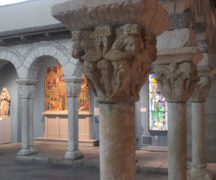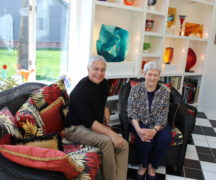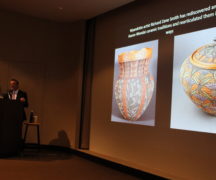From TOLEDO MUSEUM OF ART
“Everything is Rhythm”: Mid-Century Art & Music” opens in the New Media Gallery at the Toledo Museum of Art (TMA) April 6. In this multisensory exhibition, which runs through Nov. 3, music and art are brought together as 14 visual art masterpieces are paired with carefully selected musical accompaniments.
“Everything is Rhythm” is jointly curated by Halona Norton-Westbrook, director of curatorial affairs, and Scott Boberg, manager of programs and audience engagement.
“The Toledo Museum of Art has long celebrated the promotion of both the visual and musical arts,” explained Norton-Westbrook. “’Everything is Rhythm’ seeks to engage visitors by prompting close looking, contemplation and consideration of the connection between visual and auditory forms.”
The pairings of the visual and musical works in the exhibition, which includes both the historical and contemporary, have been purposefully combined for a variety of reasons.
“In some instances, the composer and artist were known to one another and shared a direct connection, while in other instances, the selected musical composition and art work share ideas, approaches or aspects such as rhythm, texture or basic structure. In some instances, the art work and music paired with it are separated by decades,” Boberg explained.
For example, “And Then There Were Three” by Julian Stanczak (American, born Poland, 1928-2017) is paired with “Metamorphosis III,” by composer Philip Glass. The cinematic scale and proportion of Stanczak’s painting is matched by the lush repetition of this solo piano work, performed by Lisa Moore, whose in-gallery concert at 3 p.m. Nov. 3 will conclude this exhibition.
The title of the exhibition, “Everything is Rhythm,” takes its inspiration from a quote by the painter Larry Poons, whose work is prominently featured in the final section of this exhibition. “Everything is Rhythm” will be accompanied by a series of in-gallery concerts.





